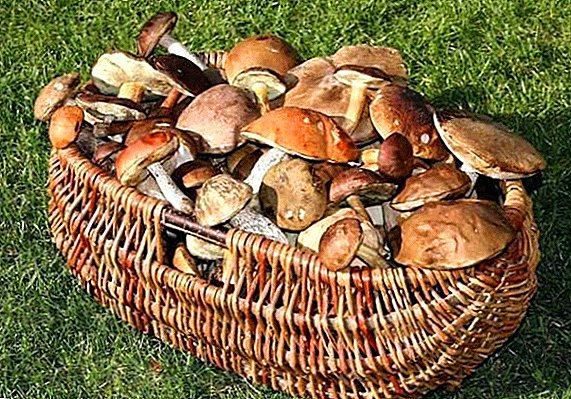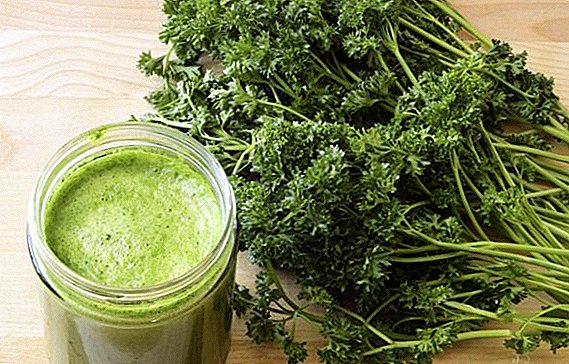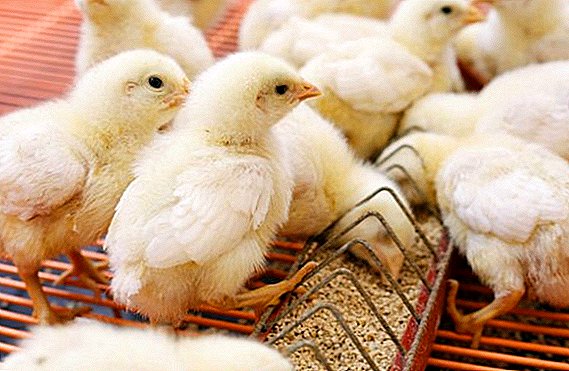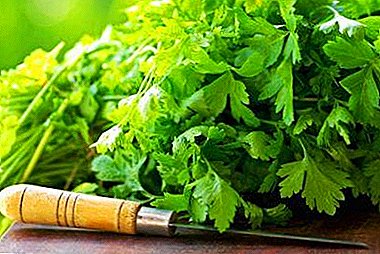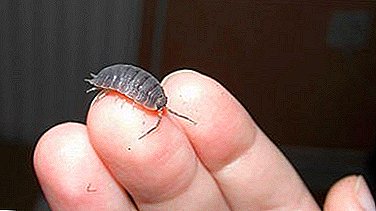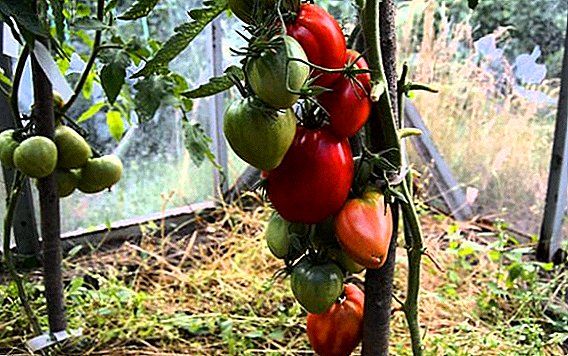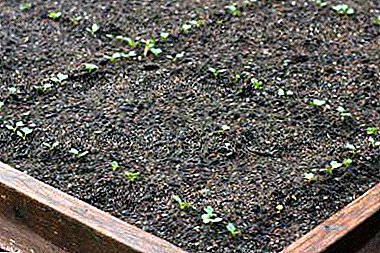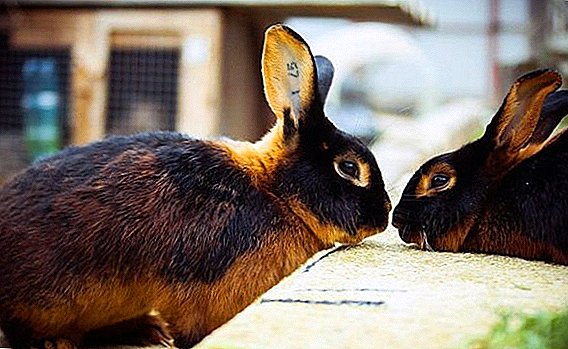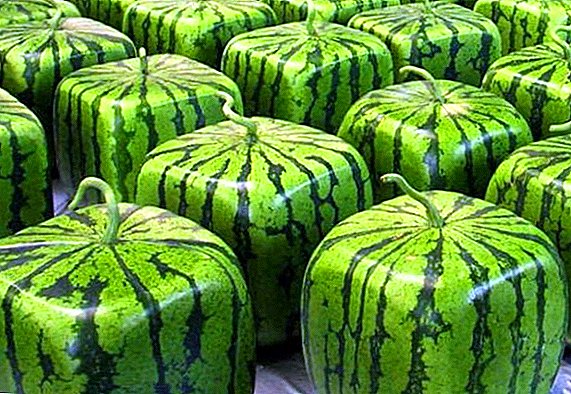
Getting to the cultivation of radish, like any other crop, it is necessary to determine not only the choice of site for planting, but also with the compatibility of plants. Taking into account the rules of crop rotation and the neighborhood of vegetables in the beds is important for the growth of root crops, the rational distribution of plantations, and the maintenance of the qualitative composition of the soil.
In this article we will tell you what you can plant after radishes in the same year and next season, can you plant cucumbers or tomatoes after it, how will the plant feel if the onion grows next door and with what is better to sow the vegetable seeds?
Why is there compatibility between different cultures?
Each plant requires a different amount of nutrients from the soil.. It is necessary to take into account the crop rotation of crops - the alternation of crops during sowing in order to obtain higher yields.
The interaction of vegetables on the beds is studied by a special science - allelopathy. Each plant releases to the environment different substances that positively or negatively affect the next planted crops. Experienced gardeners necessarily follow the mixed plantings of plants.
The following points depend on the compatibility of cultures:
- saving space on the site;
- elimination of soil depletion;
- increase in crop quality;
- lack of additional fertilizing;
- improving the taste of crops;
- waste of the least effort on the treatment of plants from pests.
Crop rotation and mixed planting are regulated by specially derived patterns of alternation of plants in the plots, as well as temporary periods of the organization of crops.
After which vegetables can you sow radishes?
 To determine the plants - the predecessors, after which you can effectively plant radishes, you need to know how vegetables will be compatible with the ecosystem that is already organized in garden beds as a result of growing another crop. Root need lighting, good moisture (from 60 to 70%), fertile soil structure, nutrients.
To determine the plants - the predecessors, after which you can effectively plant radishes, you need to know how vegetables will be compatible with the ecosystem that is already organized in garden beds as a result of growing another crop. Root need lighting, good moisture (from 60 to 70%), fertile soil structure, nutrients.
Recommend planting radishes on the beds after harvested early potatoeswhen the soil will contain a small concentration of nitrogen, which will not allow the botve to develop too much, while the roots will powerfully grow. But it should be borne in mind that there is less potassium in the soil, and it is necessary for growing beautiful vegetables with a bright color. Replenish this nutrient by planting oats or additional supplements.
Excellent predecessors for radishes are pumpkins, cucumbers, zucchini, greens. A good help is the application of organic fertilizers for growing such vegetables. It is permissible to plant roots and after harvesting tomatoes and beans.
Do not allow the planting of radish after swede, cabbage, radish or turnip because of the common risks of pests and diseases with these crops. It is highly undesirable to plant roots and after harvesting peas.
Next to what the plant will feel good on the site?
Root grows well next to the string bean. Such a neighbor has a good effect on the taste and size of the radish, protects the planting from cabbage flies and worms. Root crops recommend planting 14 days earlier than the string beans.
To get a large-fruited crop, it is necessary to plant watercress, nasturtium in a joint bed. Radish is useful to place next to cucumbers, parsnips, strawberries, grapes, strawberries, as it has a positive effect on these crops. In mixed crops, roots are perfectly combined with parsley, carrots.
You can not do planting radishes next to the beet chard, onions, fennel, rhubarb, hyssop.
What to plant after radishes in the summer of next year?
Vitamin root crops are planted from spring throughout the summer season (depending on the ripeness of the variety), in advance preparing the ground from autumn. In June, it is not recommended to sow because of the long duration of daylight, as the plants can go to the arrow and not give the crop.
Radishes ripen completely from 20 to 40 days, gathering vegetables, gardeners begin to prepare the site for other crops. If mixed plantings were made, then the site simply leaves more room for the growth of crops.
After harvesting, root crops are not planted in the same beds:
- cabbage vegetables;
- rutabaga;
- radish;
- radish;
- carrot.
 Harvesting radish, in the summer and the next season, if the crops are not combined with cucumbers, bush beans, squash, in this area can be cultivated:
Harvesting radish, in the summer and the next season, if the crops are not combined with cucumbers, bush beans, squash, in this area can be cultivated:
- legumes;
- tomatoes;
- potatoes;
- onion;
- zucchini;
- greenery.
You can plant melons, but only if the area allocated for the site allows you to grow large crops. Eggplants grow well after radish.
As for the next summer season, it is necessary to plan the plantings and taking into account what was grown in the beds after the harvest of radish. For example, if potatoes were planted after harvesting early root crops, then it is appropriate to cultivate cucumbers, pumpkin, garlic, zucchini, beans in the next season. Cruciferous (Cabbage) vegetables should not be planted for several years.
Is it possible to plant a vegetable in the same area?
Experts do not recommend planting the same vegetables in one area.. Radish does not deplete the soil, but it is not necessary to re-sow the same types of crops in one place, in order to exclude the damage of plants by pests and diseases. Better to take a break of 3 years. Win-win - planting greens after radish:
- onions on feather;
- dill;
- parsley;
- some types of salads.
You can replace the planting of root crops pumpkin crops, zucchini, tomatoes, onions, peas, eggplant.
Consequences of compatibility issues
Violating the rules of compatibility of plants in the beds, you can face a number of problems. These include:
- Inconvenience care crops, when the width of the beds will not exceed one meter, in the absence of separation of plantings by maturity, height, lighting conditions.
- Soil depletion in case of unaccounted crop rotation periods, with the exception of planting sideratov for the enrichment of the soil in the free areas.
- Getting unripe or substandard vegetables, planting in a row on the same plot the same or related plants.
 When planting root crops in the beds, where the crop of radish, cabbage, horseradish, radish was harvested, the cruciferous flea begins to eat holes in the leaves, the greens wither, the vegetables do not gain the necessary weight, stop growing. The leaves in this case must be treated with a solution of tobacco dust, adding 2 cups of the substance to a mixture of 50 g of soap and 10 liters of water.
When planting root crops in the beds, where the crop of radish, cabbage, horseradish, radish was harvested, the cruciferous flea begins to eat holes in the leaves, the greens wither, the vegetables do not gain the necessary weight, stop growing. The leaves in this case must be treated with a solution of tobacco dust, adding 2 cups of the substance to a mixture of 50 g of soap and 10 liters of water.
When planting radishes near other cruciferous plants, powdery mildew infection can be obtained where plants deform and slow down in growth. Planting is treated with fungicides or bordeaux mixture.
The abundance of weed grasses in the area can lead to the defeat of the keel.when growths are formed on root crops due to acidic soil conditions. The roots of the plants turn brown and rot. Eliminate the disease by irrigation with milk of lime.
Given the rules of crop compatibility when sowing, you can avoid problems related to the cultivation of radish, simplify the care of plantings, maintain a qualitative soil composition in garden beds, get a large crop of tasty vegetables.


